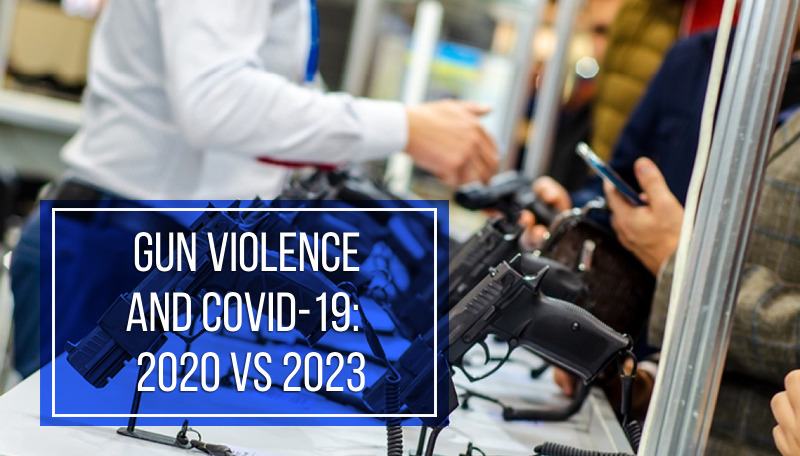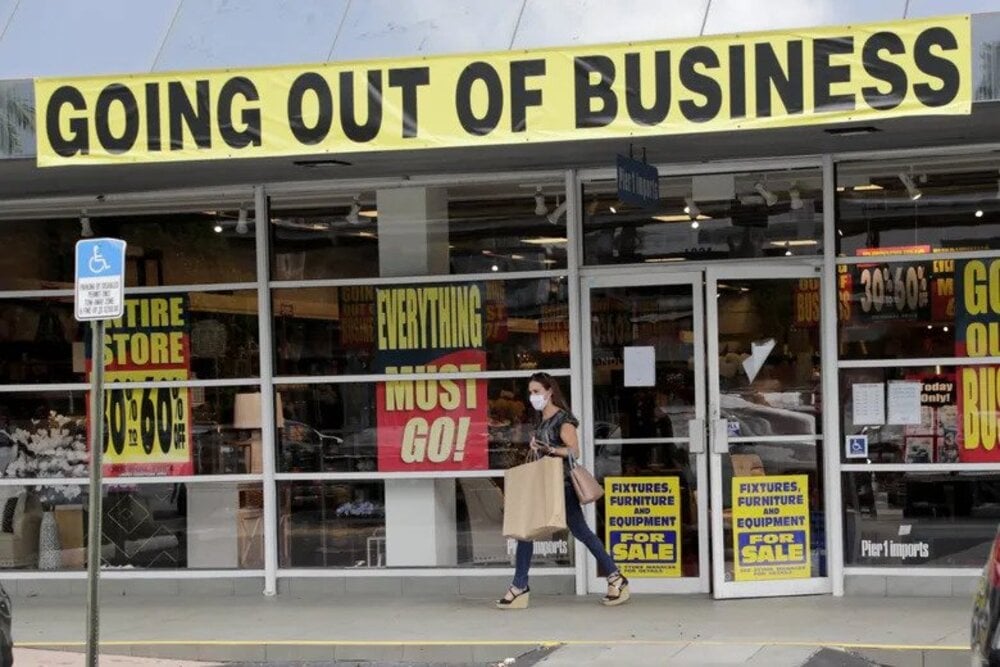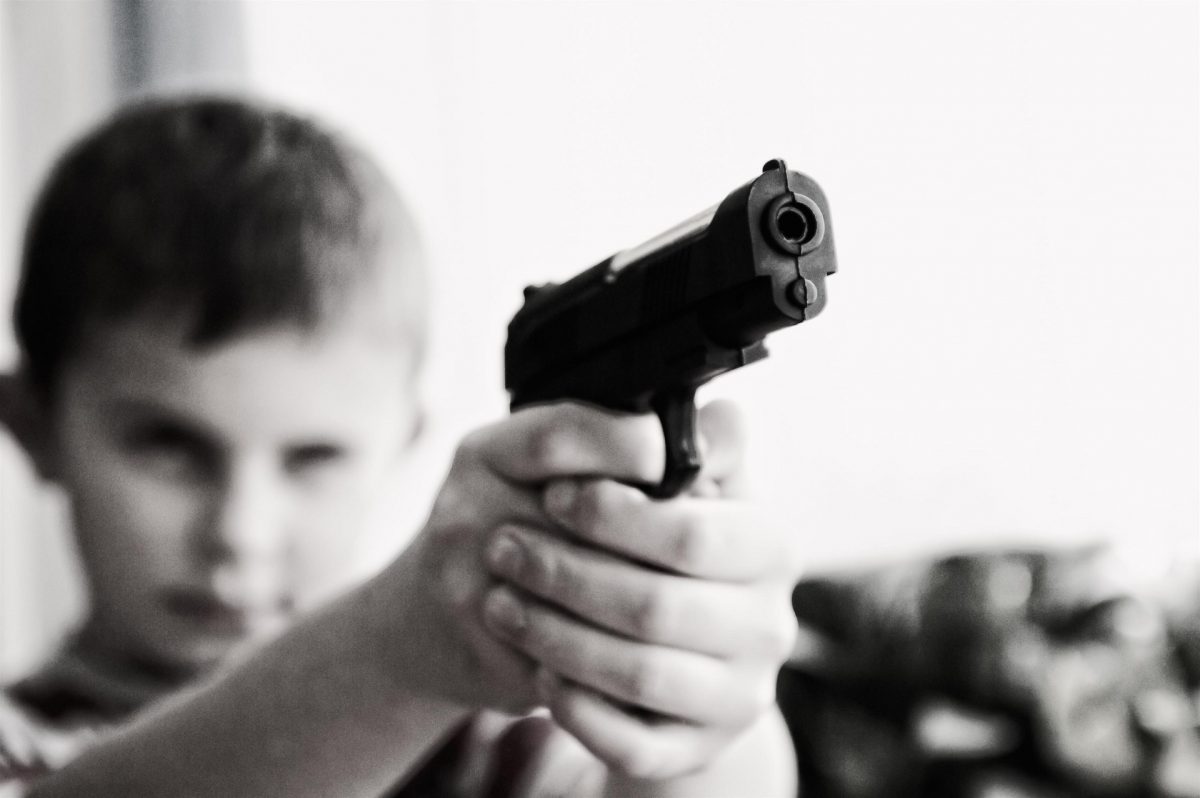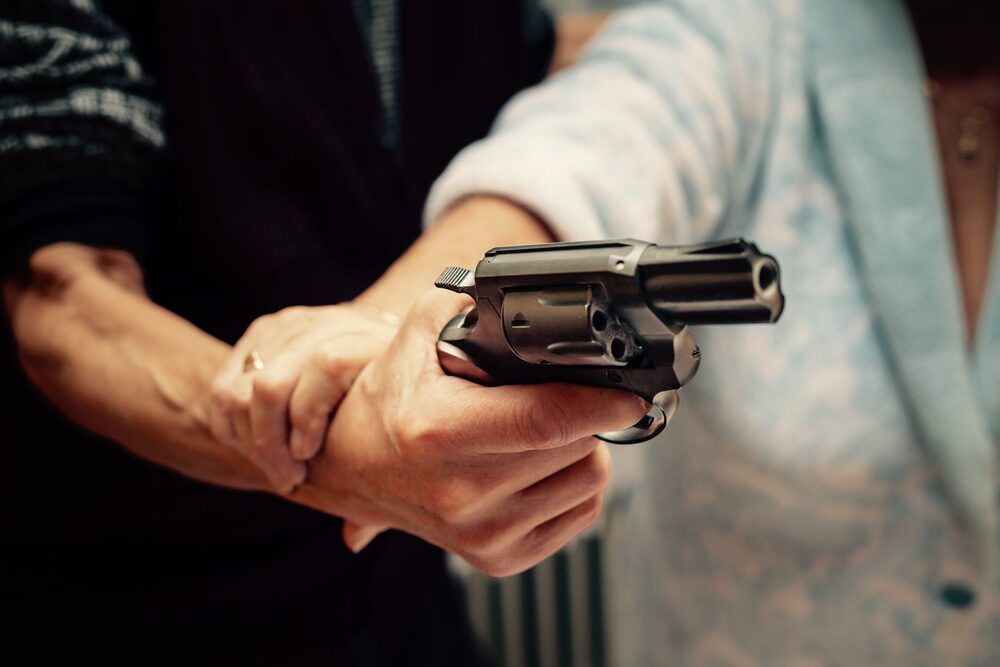Last Updated on
Gun Violence and COVID in 2020 vs 2023
In the face of an unprecedented global health crisis in 2020, the United States grappled with not one, but two public health emergencies: the COVID-19 pandemic and a surge in gun violence. The collision of these crises had far-reaching and long-lasting impacts, casting a grim shadow over the years. As the world entered into lockdowns, social distancing, and a new era defined by the virus, the U.S. saw an alarming spike in gun violence. What exactly did COVID-19 do to the gun violence rates? Do the after-effects of the pandemic continue to influence the situation with firearm-related violence in 2023? This article aims to delve into the complex relationship between COVID-19 and gun violence, comparing the situation in 2020 with the developments and trends observed in 2023.
Table of Contents
The Recipe for Disaster
Fatal Negligence
Children and Guns
Domestic Violence
Gun Violence in 2023
FAQs
The Recipe for Disaster
The COVID-19 pandemic brought about an unprecedented crisis that affected every aspect of our life. The ramifications were numerous, not least of which was a significant rise in social unrest. As the pandemic unfolded, the fear and anxiety surrounding the virus coupled with the civil agitation regarding measures that were taken to address the issue. The atmosphere of uncertainty and premonition forced people to search for ways to reacquire their lost sense of safety. Hence the unprecedented rate of gun sales.
According to a report by Northwestern University, gun sales spiked in 2020 amid the pandemic. The report indicates that, at the onset of the pandemic in March 2020, 1.9 million guns were sold. The number grew to 22 million by the end of 2020, representing a 64% increase over 2019. This surge in gun ownership, combined with economic distress and social isolation due to COVID-19, is said to have intensified the country’s gun violence crisis.
The National Rifle Association of America reported a massive crime spike stemming from social unrest and COVID lockdowns destabilizing communities. Gun violence is known to have increased by over 30% during the pandemic. While suicides, which usually comprise more than half of gun-related deaths, grew by only 1%, the number of homicides, murders and unintentional gun deaths increased by 26%. However, scapegoating firearms is always the easiest solution. To see the full picture, we should consider the factors whose role may seem less apparent.
Fatal Negligence
As gun sales experienced a significant boost, the system for background checks struggled to keep up with the demand. The FBI, which operates NICS, was inundated with background check requests, leading to delays and backlogs. This strain on the system increased the risk of what’s known as the “Charleston Loophole,” a gap in federal law that allows gun sales to proceed if a background check isn’t completed within three business days. That was one of the factors that made it easier for ill-intentioned people to put their hands on firearms without having been inspected.
Moreover, the rapid rise in gun sales during the pandemic meant that many first-time gun owners (a pretty sizable group) acquired firearms without proper training. Under normal circumstances, they would have access to in-person safety courses and training. However, due to COVID-19 restrictions and social distancing measures, many of these resources were unavailable or severely limited. The lack of training remains a serious threat to public and personal safety, as inexperienced gun owners may not fully understand safe storage practices or how to handle firearms responsibly. It is estimated that more than half of gun owners do not store all their guns securely (unloaded and locked). And while adults may be conscious enough not to mess with a loaded firearm, children often lack this wariness.
Children and Guns
With the onset of the pandemic, millions of children across the United States found themselves spending much more time at home due to school closures. Combined with a surge in gun sales, this situation led to a concerning increase in unintentional shootings by children. From March to December 2020, there was a 31% increase in unintentional shooting deaths by children compared to the same period in 2019. That includes incidents where toddlers, young children, and teenagers, 17 and younger, accessed a gun and fatally wounded a sibling, a schoolmate, another family member, a friend, or themselves.
Many of these incidents can be attributed to the fact that millions of children live in homes with guns, many of which aren’t stored safely. The presence of unsecured guns in homes combined with the fact that children were spending more time at home due to school closures significantly increased the risk of unintentional shootings
Domestic Violence
Furthermore, the stay-at-home orders and social distancing measures imposed during the pandemic indirectly contributed to the increase in domestic gun violence. With more people confined to their homes, cases of domestic abuse rose sharply. Bereft of their usual communication rituals, people became more stressed, and being stuck with one person in the same space only increases the chances of abusers lashing out at their victims. Access to a firearm in these situations significantly increases the risk of domestic violence becoming lethal. The number of Domestic Violence Hotline callers who experienced the use or threat of firearms grew by 19% in comparison to 2019. The peak number of calls accounted for the early months of the pandemic when social distancing orders were the strictest.
As you can see, whereas gun violence rates indeed increased during the pandemic, there are many factors at play here. For example, the lack of proper training and education on responsible gun ownership contributed to the increase in gun violence rates to no lesser degree than the increase in gun sales volume. In addition to that, surveys show that the overwhelming majority of gun owners acquired a firearm out of fear of lawlessness, potential prisoner release and chaos brought about by the pandemic. As usual, self-defense remained the primary reason for acquiring a firearm.
Gun Violence in 2023
We are only halfway through 2023, so it’s too early to make any deductions. What is known for sure is that 2021 outran 2020 in the number of gun-related deaths which, however, dropped in 2022. While gun violence didn’t stop being an issue, it seems that things might be returning to pre-COVID numbers soon. Certain states, Philadelphia being one example, saw a 23% decrease in gun-related deaths from the previous year.
So far, Gun Archives report 24,247 gun-violence-related deaths. Homicides, murders, and unintentional shootings make up only 44%. Given we’ve surpassed the half-of-the-year margin, if things stay the same, the numbers are likely to be lower than those of 2022 (app. 46,000). That’s a positive trend, given that the number of owned firearms doesn’t decrease. That means that the boost in gun sales alone doesn’t inevitably lead to an increase in gun violence rates. The COVID-19 pandemic was an exceptional case that exposed and exacerbated many of the existing issues. Thus, it is not guns themselves that are the root of the problem, but the factors surrounding them.
FAQs
What was the impact of COVID-19 on gun violence in 2020?
The COVID-19 pandemic had a significant impact on gun violence rates in 2020. Fear and uncertainty led to an unprecedented surge in gun sales, followed by an increase in firearm-related incidents. The pandemic also exacerbated social and economic disparities, contributing to increased stress and tension that often escalated into violent incidents.
Do the effects of COVID-19 continue to influence gun violence rates in 2023?
While some of the after-effects of the COVID-19 pandemic continue to affect gun violence rates in 2023, the numbers seem to be slowly returning to pre-COVID-19 values.
How did COVID-19 affect domestic violence?
Stay-at-home orders and social distancing measures meant more people were confined to their homes, leading to a rise in domestic violence incidents. Access to a firearm in these situations significantly increased the risk of domestic violence turning lethal.














